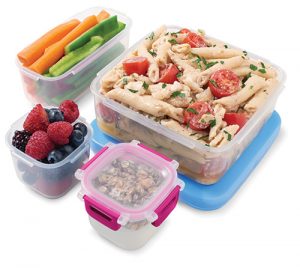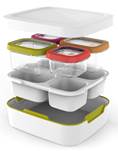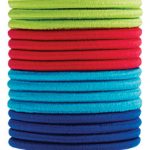It can be time-consuming (and maybe a little annoying) to apply protective sunscreen on you and your family members—especially if these people happen to be squealing kids, just waiting to get outside in the sunshine! We’ve got some great tricks and tips for easy (ish) sun care application that will help keep your family covered. Here’s our guide to sun safety for parents.
Rules for Parents

Plan on five minutes per body
You might be thinking, “That is completely nuts! Sunscreen doesn’t take that long.” You may be right, but many of us groan at the thought of applying sunscreen on our kids because we don’t plan enough time for it. After gathering up all the snacks, water bottles, extra clothes, towels, sand toys, and so on, we’re already leaving an hour later than we wanted to. At this point, we’re often not in a good head space to tackle a rushed sunscreen job, so we either lose our tempers, give up, or decide to apply upon arrival. None of these are ideal.
So, yes, allowing five minutes per person is over-planning, but if you budget this much time there is a better chance you’ll actually leave the house smiling (and maybe even have a toy shovel packed for each kid!).
Apply 20 to 30 minutes before going out
We know: what a pain! But experts say sunscreen takes 20-30 minutes to become effective. Good thing we’ve already budgeted our time at home! Plus, following this rule means slathering on sunscreen away from all of the playground distractions and blowing sand. You may even schedule time between pajamas and getting dressed for the beach–it’s easier to apply sunscreen when kids are changing clothes. Also, remember to reapply regularly, especially after hitting the pool or the ocean for a swim.
Think of sun protection like you would a car seat
Toddlers cry and fight, but you still buckle them into a car seat (forcibly, if necessary), right? Sun protection is the same: a necessity. It’s not one of those teachable moments where you let your child choose not to wear a raincoat and get uncomfortably wet. One blistery sunburn in childhood can increase the risk of melanoma by 50%. Safety trumps tantrums, and that’s that.
Tricks for Kids

A quick internet search yields loads of tricks for making sunscreen tolerable for kids. Here are a few of our favourites.
A blogger at Happily Ever Mom lists seven ways to speed up the slather. One of her great methods is to make it into a timed challenge she calls “The Countdown”. The Countdown challenges mom or dad to finish the job before getting to number 10. She advises that parents make sure they are in charge of the counting, so they can stretch the countdown if they need to.
Another good trick is a game called “What’s Missing?” Apply everywhere but the nose, or one arm, and let your kid guess which body part still needs lotion. This gives your child the all-important power to point out mom or dad’s “mistake.”
Alternatively, you could give your child a sponge paintbrush and put her in charge of everyone’s sunscreen, like the girl in this video. It’s messy, but it works. And maybe their enthusiasm will solve this doctor’s number one complaint: that parents don’t apply enough lotion.
Sun Safety while Solo
Remember back before you had kids, when you took a book to the beach, and the biggest problem you faced was trying to put sunscreen on your own back? Simpler times. If your kids hit the pool as soon as you get there, and you don’t have help for your own sun care, we’ve got you covered there too. Here are a few hilarious, but strangely practical tips for applying sunscreen to your own hard-to-reach places. The toilet brush isn’t for everyone, but maybe a spatula or paint roller could do the trick.
As you gear up to take on the summer sun, set challenging, yet realistic goals. Try to finish the application process without losing your temper, and work on getting through a whole summer without a sunburn. You can do this!
Stay safe out there in the sunshine.


 It’s almost that time of year again. Time for eager kids to explore a new set of subjects. Time for growing bodies to eat healthy, balanced lunches while enjoying the company of their friends. That’s right – It’s time for bright young minds to start a fresh new school year!
It’s almost that time of year again. Time for eager kids to explore a new set of subjects. Time for growing bodies to eat healthy, balanced lunches while enjoying the company of their friends. That’s right – It’s time for bright young minds to start a fresh new school year! With
With  Now that we have messy meals all sealed up, let’s put a lid on that kid’s messy hair! With
Now that we have messy meals all sealed up, let’s put a lid on that kid’s messy hair! With  And nothing says new school year like a bunch of fun, colorful writing utensils! From doodling for fun to completing math equations, we have you covered with a wide selection of fun brands:
And nothing says new school year like a bunch of fun, colorful writing utensils! From doodling for fun to completing math equations, we have you covered with a wide selection of fun brands:


